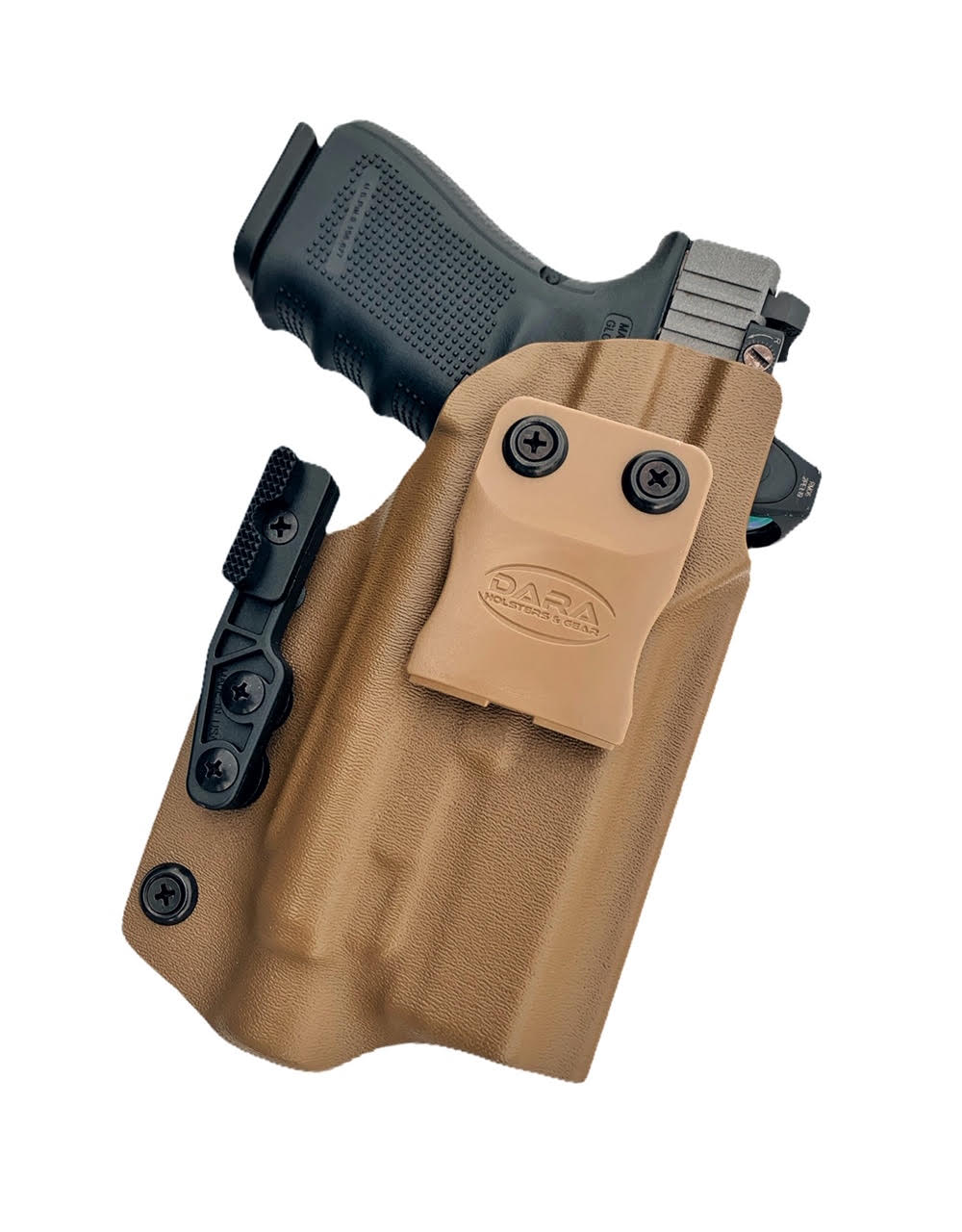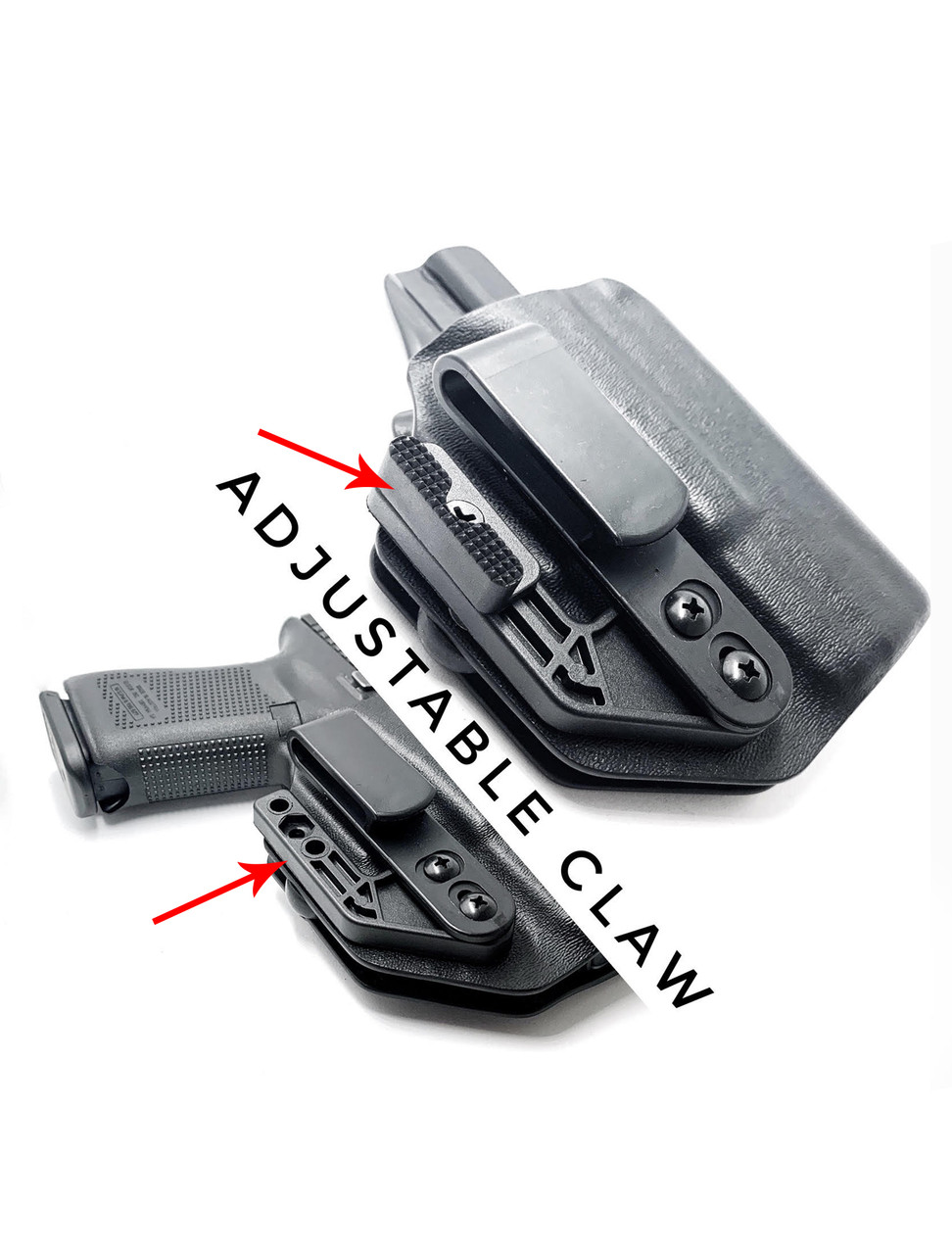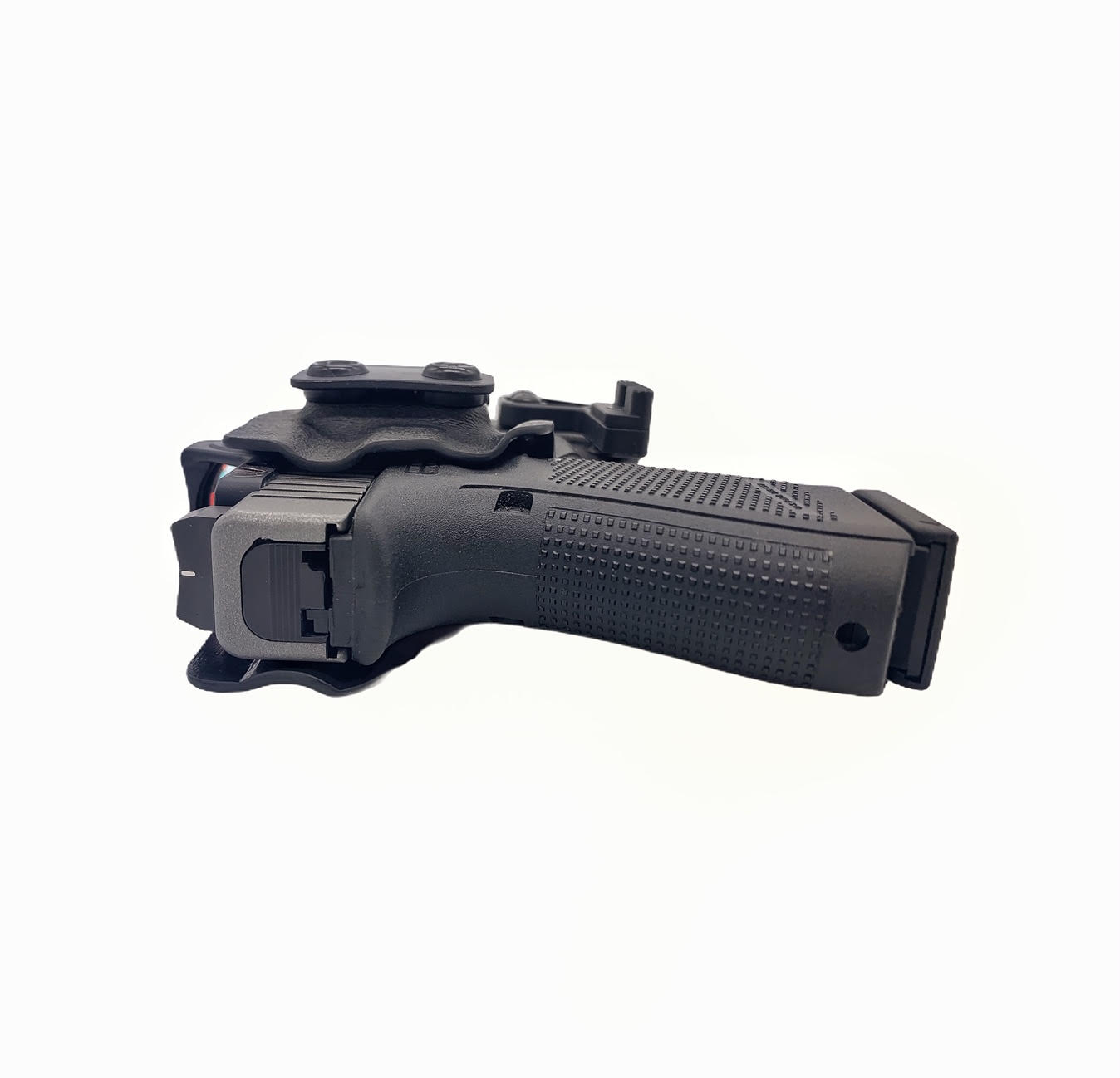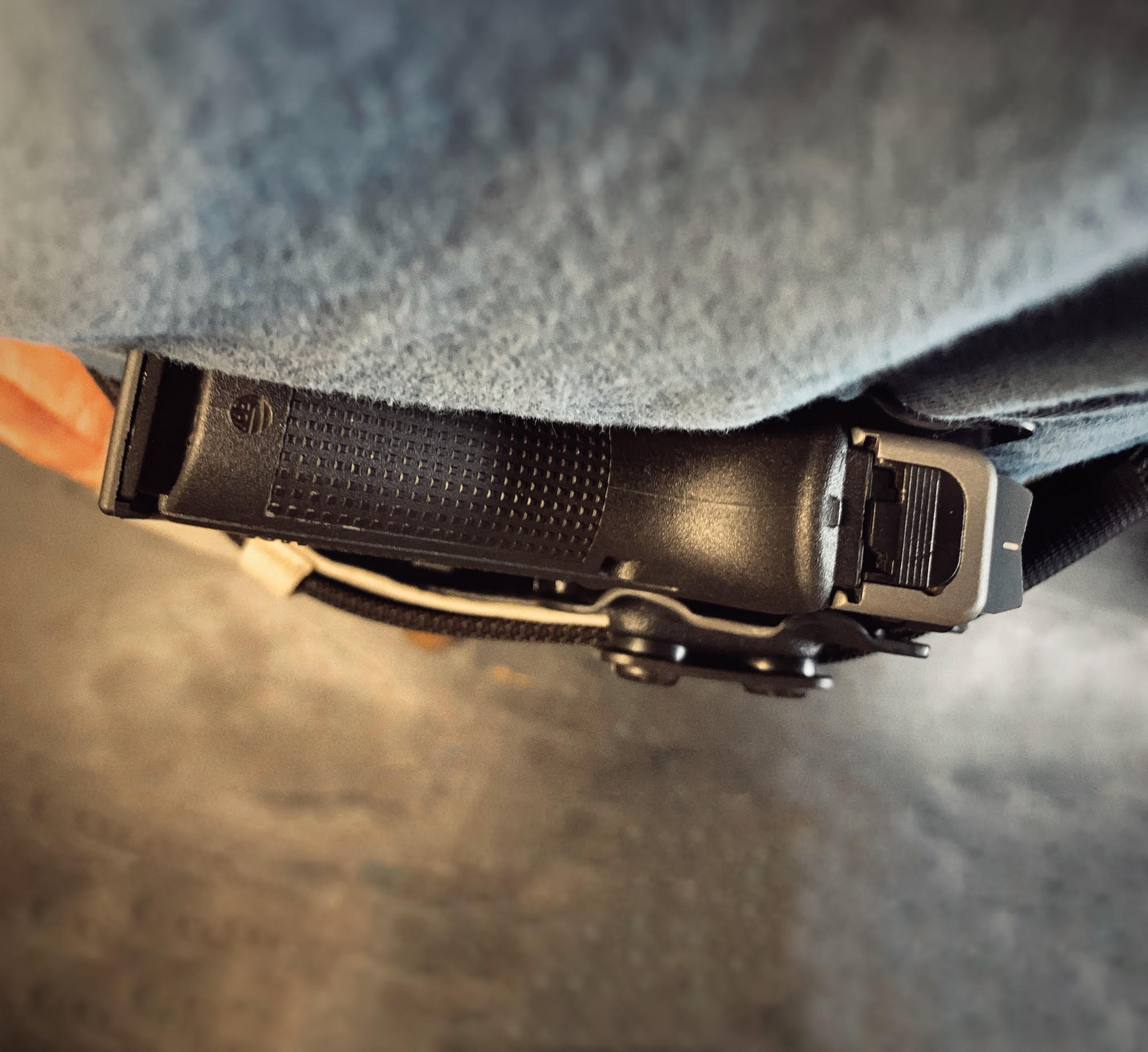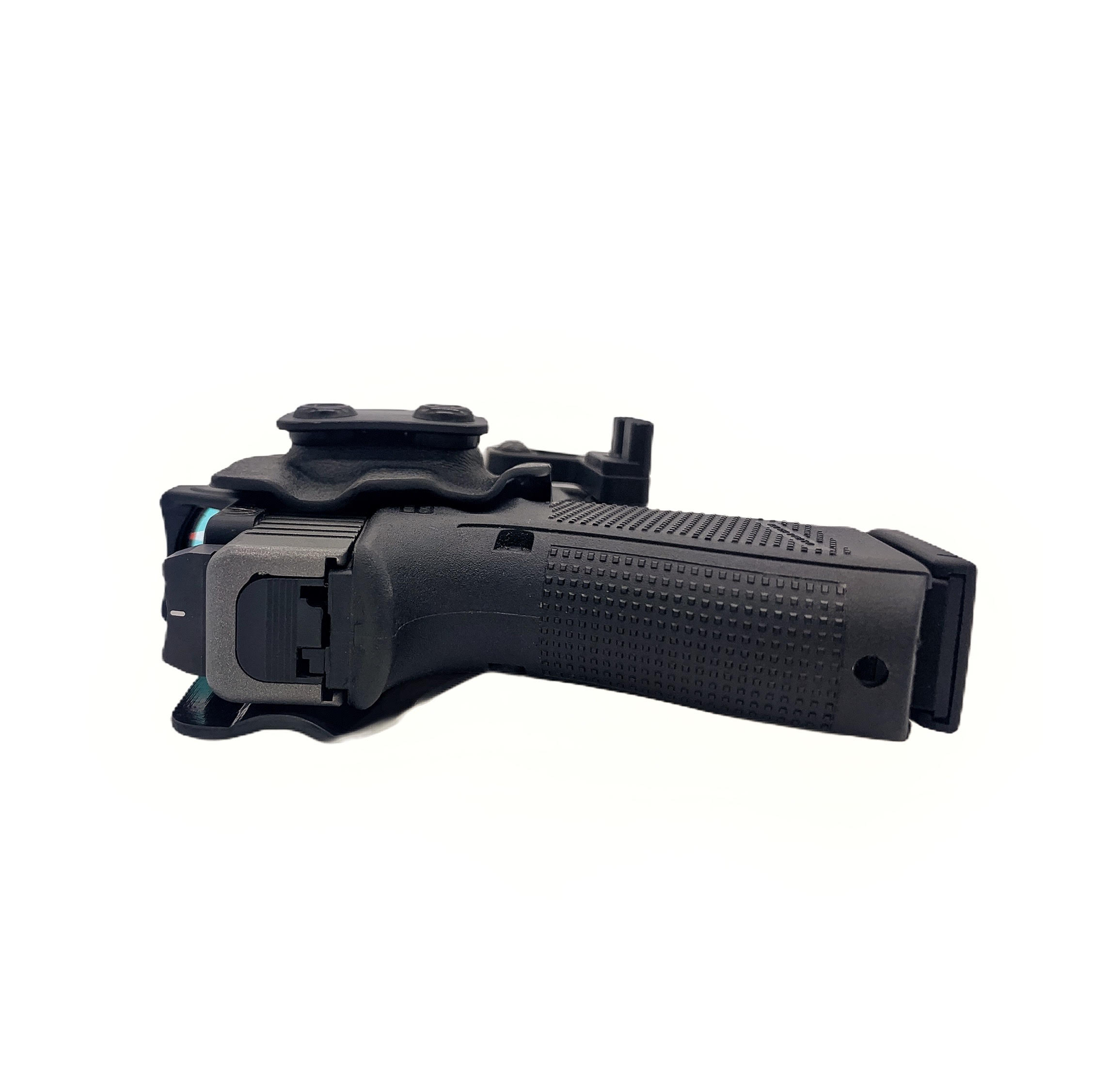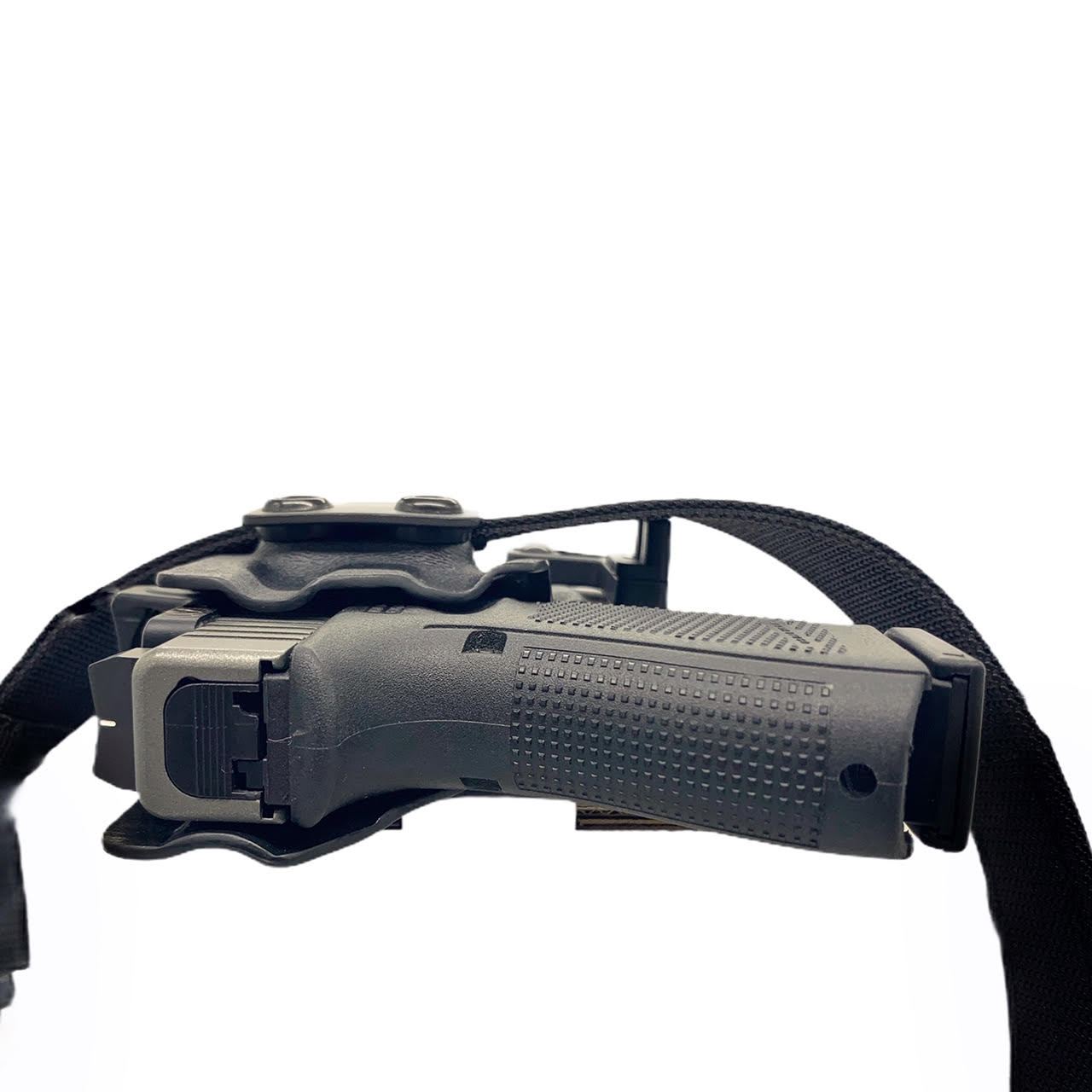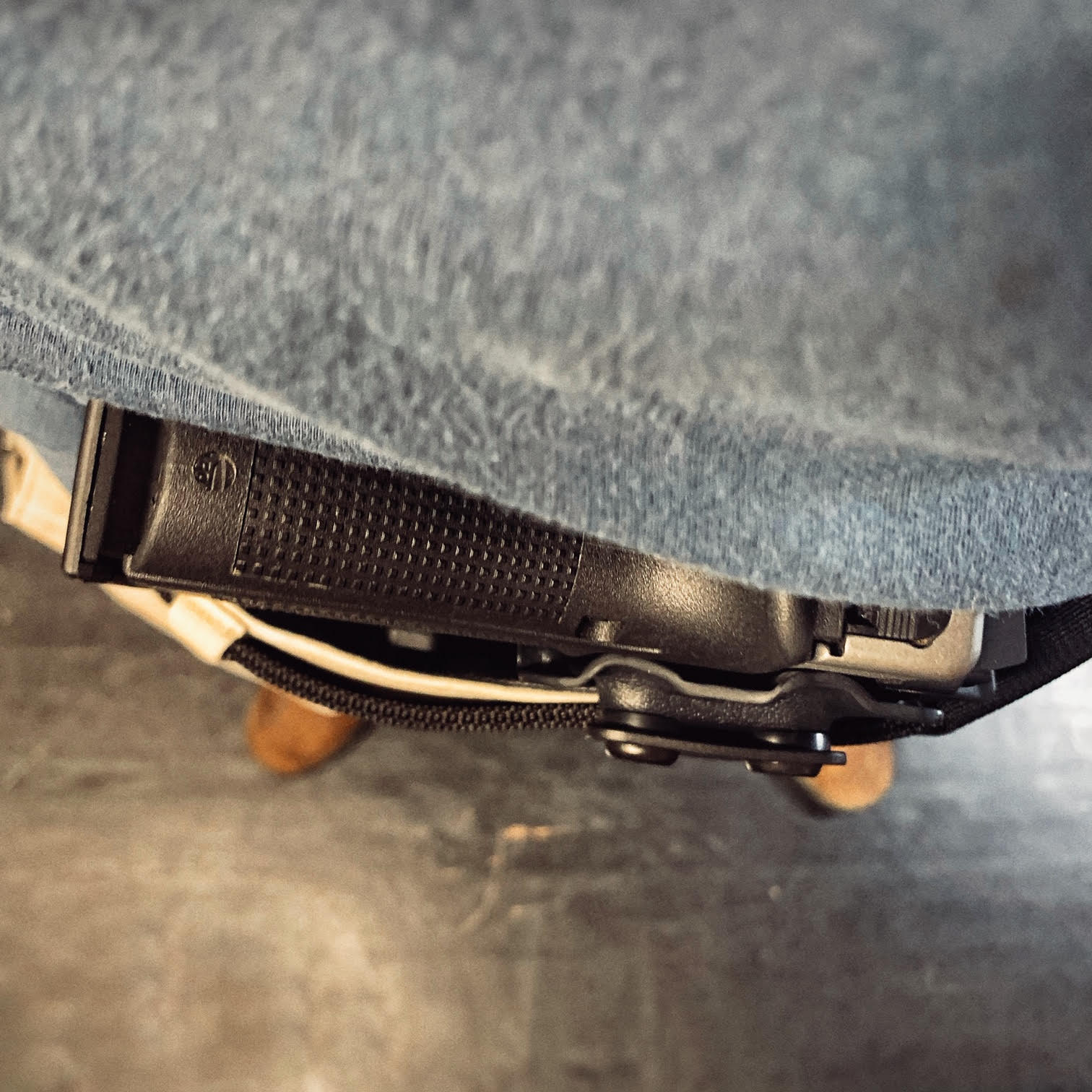Holster Claw and Attachments: Explained
Posted by Dara Holsters on Sep 03, 2020
Check out this article on the Appendix Holster Claw attachments: What they look like, what they're for and how they affect your concealed carry experience.
A holster claw is an attachment that improves firearm concealment by leveraging pressure against your belt to pull the grip of the pistol closer to your body. This simple yet effective accessory uses basic physics to reduce printing (visible outlines of your firearm) when carrying concealed.
In this guide, we’ll break down the meaning of a holster claw, how it works, its benefits and potential drawbacks, and how Dara Holsters has designed a superior solution to maximize your concealed carry experience.
What Does a Holster Claw Do?
The holster claw, sometimes called a "wedge" or "lever," is a small component mounted near the trigger guard of an appendix inside-the-waistband (AIWB) holster. Its primary function is to push against your belt, creating leverage that pulls the grip of your firearm inward, reducing its outward profile. This ensures better concealment without needing bulky clothing.
Benefits of a Holster Claw
- Enhanced Concealment
By reducing printing, a holster claw allows for easier concealed carry, even with larger firearms like the Canik TP9SFX. - Improved Stability
The claw helps secure the holster against your body, minimizing movement during daily activities. - Versatility for Different Body Types
A properly designed claw works well for various body shapes, ensuring the firearm remains discreet and comfortable to carry.
By reducing printing, a holster claw allows for easier concealed carry, even with larger firearms like the Canik TP9SFX.
The claw helps secure the holster against your body, minimizing movement during daily activities.
A properly designed claw works well for various body shapes, ensuring the firearm remains discreet and comfortable to carry.
Disadvantages of a Holster Claw
While the holster claw offers significant benefits, there are some limitations to consider:
- Belt Alignment Issues
If the claw is not aligned with the holster’s belt attachment, it can slip under the belt or fail to create the necessary leverage. - Ride Height Restrictions
Claws must be mounted under the trigger guard, which can lead to a higher ride height. This isn’t an issue for most appendix carriers, but it may feel awkward for those using firearms with larger trigger guards, such as the VP9SK. - Potential Discomfort
If the claw’s angle is too aggressive, the grip may be pulled so tightly into the body that it becomes uncomfortable to wear for extended periods.
How Dara Holsters Designs Superior Holster Claws
At Dara Holsters, we understand that not all claws are created equal. That’s why we’ve engineered a solution that addresses the common drawbacks of traditional holster claws:
- Optimized Alignment
Our holsters ensure perfect alignment between the claw and the belt attachment. This guarantees effective leverage and prevents slipping beneath the belt line. - Independent Mounting Design
Unlike many competitors, our holster claws are mounted independently of the retention system. This means adjusting retention won’t loosen the claw, ensuring consistent performance. - Adjustable Claw Aggressiveness
To prevent discomfort, our AIWB holsters ship with adjustable claws. We provide multiple claw pieces, allowing you to customize the degree of leverage based on your carry preferences. - Quality Control
Every holster undergoes five quality checks to ensure the claw and belt clip are properly aligned and securely fastened.
Frequently Asked Questions
Q: What is the meaning of a holster claw?
A holster claw is an attachment designed to improve concealment by using leverage against the belt to pull the grip of a firearm closer to the body.
Q: Does every holster need a claw?
No, holster claws are most effective for AIWB holsters or other IWB holsters where grip concealment is critical.
Q: Can I adjust the claw on my Dara Holster?
Yes! Our adjustable claw system allows you to choose between different levels of aggressiveness for optimal comfort and concealment.
Why Choose Dara Holsters for AIWB Claws?
At Dara Holsters, we believe that a concealed carry holster should do more than just hold your firearm—it should enhance your overall carry experience. By incorporating innovative claw designs and rigorous quality control, we’ve created holsters that deliver unmatched comfort, stability, and concealment.
Whether you’re carrying a compact pistol or a larger firearm like the Canik TP9SFX, our holsters with claws are designed to fit your lifestyle.
Ready to Upgrade Your Concealment?
Discover the benefits of a holster claw firsthand with Dara’s AIWB Holsters. Engineered for performance and backed by a lifetime warranty, they’re the ultimate choice for serious concealed carriers.
Visit DaraHolsters.com today to learn more and find the perfect holster for your firearm.
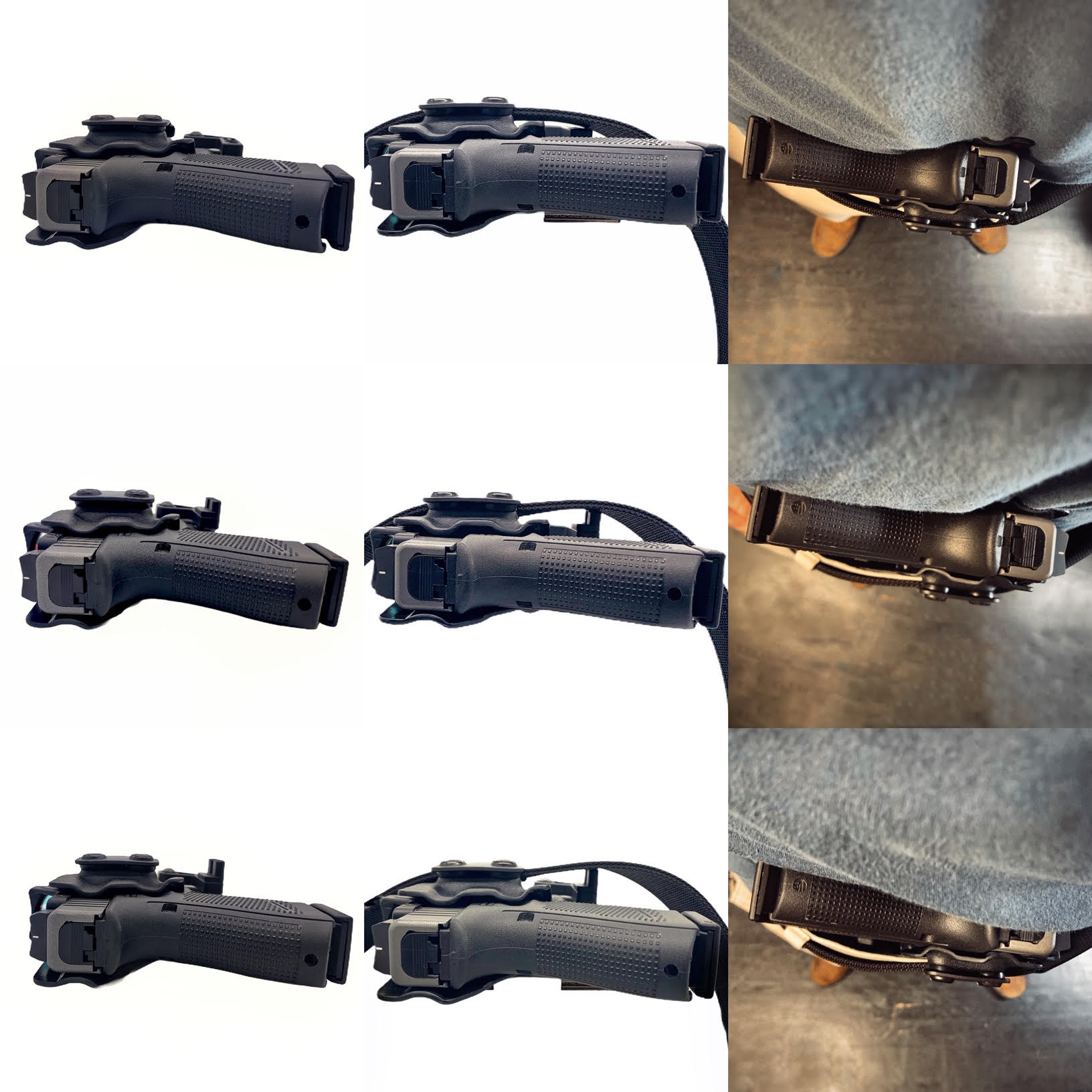

|
|
|
Holster Claw: Base Only
This is how we ship most of our Appendix Carry Holsters: with the Claw base only
|
Just the Holster
|
|
|
| On the Belt |
|
|
| Inside the Waistband |
|
|
As you can see, the claw base alone does aid slightly in concealment by putting space between the holster body and belt, separating the belt just enough from the body to keep the grip from sticking out too far. With some firearms, especially compact, subcompact and micro compact guns, this is enough to prevent printing. However, if you receive your holster with no attachment and find that you need a bit more help to prevent printing, you may want to add the medium sized attachment piece. See below:
Holster Claw: Medium Attachment
| Just the Holster |
|
|
| On the Belt |
|
|
| Inside the Waistband |
|
|
As you can see from the three pictures of the medium attachment, the grip of the gun is further pressed into the body, making concealment a bit easier. However, ease of concealment in the appendix position greatly depends on body type. If this claw attachment is still not enough, you may want to try the large claw piece.
Holster Claw: Large Attachment
|
Just the Holster |
|
|
| On the Belt |
|
|
| In the Waistband |
|
|
As you can see, the larger attachment piece greatly increases in size from the medium and pulls the grip well into the body. However, there are some negative side effects starting to take place with the larger piece that may cause discomfort, or even the adverse effect of printing in a different area. See below.
The larger claw piece can sometimes cause this to happen to the belt. The thicker/stiffer the belt, the less noticeable this bulge may be. However, even with the best concealed carry gun belt, like the one above, this may still happen. |
Here is the larger attachment piece inside the waistband. As you can see, the grip is tucked into the body to avoid printing, but there is now a bulge on the belt line due to how aggressive that larger attachment is. |
|
|
|
How To: Find the Perfect Holster Claw Size
As we've done above, try all three options before committing to an opinion.
There are so many different firearms and body types, you'll find that what works for some may not work for you. If you're having trouble concealing a micro compact without the claw attachments, by all means try out the medium or large attachment to see what works.
If you're unhappy with the larger attachment because it's causing your belt to bulge, try the medium piece for a while.
Keep in mind: concealment also depends on your belt. If your belt isn't thick or stiff enough to keep a fully loaded firearm tight to the body, that may be the cause of your printing issue. Just because a belt has "tactical" or "gun belt" in it's name, doesn't mean it's good for concealed carry.
Have questions about our holsters? Email us, here.

